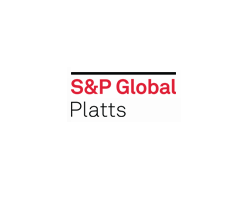October 19, 2020 - This is Part 1 of 5 in the S&P Global Platts Metals Trade Review series, where we dig through datasets and digest some of the key trends in metallurgical coal, iron ore, steel, scrap and alumina. We also explore what the next few months could bring, from supply and demand shifts, to new arbitrages, and to quality spread fluctuations.
The seaborne metallurgical coal market has entered the October-December quarter with renewed confidence after prices rose by 20% in the previous quarter.
The S&P Global Platts Premium Low-Vol Hard Coking Coal benchmark stood at $139/mt FOB Australia Sept. 30, up from $116/mt on June 30, with prices falling to as low as $105.50/mt in the July-September quarter before recovering strongly on improved demand as global steelmakers restored production.
Relaxed customs clearance measures at a major northern Chinese port, which potentially heralds stronger Chinese demand, and the forecast of heavy rain in the Queensland production hub due to a La Niña weather event have also helped buoy the coking coal price outlook for Q4.

Quota Limits Keep China on Sidelines
Weak demand resulted in total observed spot transaction volumes falling 36% to 8.2 million mt over July-September from the quarter before, Platts data showed. This comprised premium, second-tier, semi-hard, semi-soft coking coal and pulverized coal injection or PCI met coals.
The plunge was due to the near absence of China from the spot market as the country's import quota was almost exhausted in Q3. One bright spot was India, whose spot trade volume surged 97% in Q3 from Q2, Platts data showed. This resulted in the proportion of ex-Chinese trade surging to 53% of the total observed spot trade volume in August from the typical range of 20%-30%.
Australia's Bureau of Meteorology is predicting a 70% chance of a La Niña event forming during the country's cyclone season, which typically runs from December to April.
This could potentially result in increased rainfall across the primary coking coal producing region of central Queensland. Concerns of a supply shortage – and not-too-distant memories of spot prices surging above $300/mt during previous weather-impacted years – could drive buying and see prices climb in Q4.

Non-Premium Coking Coals Lose Ground
Met coal brand relativities, or the price spread between a generic premium low-vol hard coking coal and other grades of met coal, widened in Q3 due to the volatility in the spot market.
The price of Lake Vermont fell to 85% of PLV benchmark grade Saraji coal in the quarter, and for other key lower grade coals Poitrel, South Walker Creek and Hunter Valley Operations fell to 76%, 63% and 55% respectively, basis CFR China. This was below the historical average of the grades' discount levels to the benchmark price observed since January 2016 of 91%, 82%, 70% and 63%.
Spot transaction volumes for PCI fell 71% quarter on quarter in Q3, by 73% for semi-hard coking coal, and by 11% for semi-soft coals.
The return of Chinese buyers late in the quarter failed to narrow the gap between premium coking coal and weaker grades. End-users in China preferred to utilize limited import quotas on purchasing higher-grade materials due to a favorable arbitrage, while end-users elsewhere prioritized fulfilling term contracts, resulting in a smaller appetite for spot tonnage.
Market participants expect the volatile inter-brand market to remain in Q4, with brand differentials possibly narrowing as a result of a more positive market outlook due to the Queensland cyclone concerns.
In the premium hard coking coal segment, the Goonyella differential to Saraji, basis FOB Australia, blew out to a record 9.5% in September 2019, but narrowed to 3% in September 2020. This compares with an historical average of 1.5% observed since August 2016, showing that brand relativities can change quickly in response to shifting fundamentals.

Met Coke Output Hinges on Steel Recovery
The seaborne metallurgical coke market ended Q3 strongly. Benchmark 62/60 CSR Chinese coke export prices were up 6% on quarter at $297/mt Sept. 30. Strong demand in China supported domestic coke prices, leading to negative export parity, and creating a positive import arbitrage. China turned net importer of met coke in July for the first time in several years, importing 408,949 mt and exporting 390,394 mt, China Customs data showed, and the trend continued in August.

The sharp fall in China's export met coke volumes can be attributed to higher prices and stronger domestic demand than in other Asian countries. Domestic coke supply tightness saw steel mills obliged to accept three rounds of price increases totaling Yuan 150/mt ($22.03/mt) in Q3.
China introduced a series of policies to rebalance coke production capacity by linking it to steel capacity in Hebei, Henan and Shandong provinces, setting the coke to steel production capacity ratio at 0.4:1. In addition, smaller coke ovens with carbonization chambers less than 4.3 meters in height, or with more than 10 years of operating life, are to be shut or replaced in Hebei and Shanxi.
Views are mixed on whether China will continue to absorb much of the regional coke supply in Q4. Some market participants argue that coke trade flows will be dictated by the steel price recovery outside of China, which could change the arbitrage dynamics.









.gif)
















